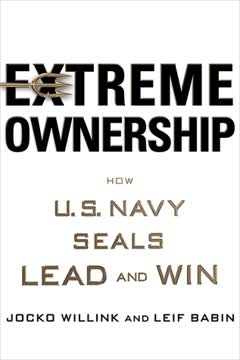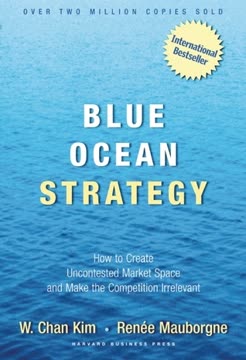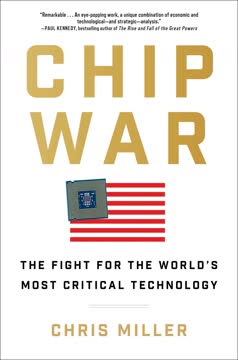Key Takeaways
1. Intuition: Translate Experience into Actionable Judgments
Intuition is the way we translate our experience into action.
Pattern Recognition. Intuition isn't magic; it's the ability to recognize patterns formed from accumulated experiences. These patterns allow us to quickly assess situations, understand their dynamics, and anticipate likely outcomes. The more patterns we learn, the easier it becomes to match new situations to our existing knowledge base, enabling rapid and effective decision-making.
Action Scripts. Once a pattern is recognized, it activates an "action script," a pre-programmed response based on past successes. This allows us to react quickly and decisively without conscious deliberation. These action scripts are not rigid rules but rather flexible guidelines that can be adapted to the specific context.
Intuition as a Skill. Intuition is not a fixed trait but a skill that can be developed and honed through experience and deliberate practice. By actively seeking out new experiences, reflecting on past decisions, and refining our mental models, we can strengthen our intuitive abilities and become more effective decision-makers.
2. Intuition Skills Training: Accelerate Expertise Through Deliberate Practice
The key to using intuition effectively is experience—more specifically, meaningful experience—that allows us to recognize patterns and build mental models.
Deliberate Practice. Intuition isn't just about accumulating time on the job; it's about engaging in deliberate practice. This involves identifying specific decision requirements, practicing difficult decisions in context, and reviewing decision-making experiences to extract valuable lessons. This structured approach accelerates the development of expertise.
Decision-Making Exercises (DMXs). DMXs are simple, scenario-based exercises that simulate real-world dilemmas, forcing participants to make decisions under pressure and uncertainty. These exercises provide a safe environment to experiment with different approaches, test assumptions, and refine intuitive skills.
Decision Requirements Table. This tool helps identify the critical judgments and decisions required for a specific role. By understanding these requirements, individuals can focus their training efforts on the most impactful areas, accelerating their development of relevant intuitive skills.
3. Blend Intuition with Analysis: A Balanced Approach to Decision-Making
We need intuition—balanced with analysis because intuition is fallible—but we can’t use analysis to substitute for intuition.
Intuition in the Driver's Seat. The most effective approach is to use intuition to guide the analytical process, rather than trying to replace it. Intuition helps us identify relevant information, frame the problem, and generate potential solutions, while analysis provides a means to verify our intuitions and identify potential flaws.
Limitations of Analysis. Over-reliance on analysis can lead to paralysis by analysis, where the decision-making process becomes bogged down in endless data collection and evaluation. Analysis can also distort the problem by breaking it down into artificial components, losing sight of the overall context.
The Fovea-Periphery Analogy. Just as our eyes rely on both foveal (detailed) and peripheral (contextual) vision, effective decision-making requires a balance between analytical precision and intuitive awareness. Intuition provides the overall perspective, while analysis allows us to focus on specific details.
4. Recognize Decision Types: Tailor Strategies for Effective Choices
Not all decisions are created equal.
Zone of Indifference. Some decisions involve choices between options that are essentially equivalent. In these cases, it's best to avoid over-analysis and simply choose an option and move on. The goal is to make a timely decision, not necessarily the "perfect" one.
Comparison Choices. Other decisions require a careful comparison of multiple options based on a common set of criteria. In these cases, analytical methods can be helpful for organizing information and identifying trade-offs.
Intuitive Choices. Some decisions rely heavily on expertise and pattern recognition. In these cases, it's important to trust your gut and act decisively, even in the face of uncertainty.
Problem-Solving Choices. Some decisions require a creative approach to overcome obstacles and find innovative solutions. In these cases, it's important to engage in brainstorming, experimentation, and collaboration.
5. Spot Problems Early: Cultivate a Mindset of Anticipation
One of the most critical uses of intuition is to alert us that something is wrong, even if we don’t know what it is.
The PreMortem Exercise. This technique involves imagining that a project has failed and then brainstorming all the possible reasons why. This helps to identify potential weaknesses and vulnerabilities in the plan before they become actual problems.
Problem Types. Recognizing the type of problem is key to effective detection. Sudden onset problems are easier to spot than gradual ones. Subtle cues require more expertise to recognize. A shrinking margin of safety demands immediate attention.
Barriers to Detection. Multiple simultaneous problems, noisy backgrounds, and ineffective data collection can all hinder problem detection. By addressing these barriers, we can improve our ability to spot potential issues before they escalate.
6. Manage Uncertainty: Embrace Flexibility and Adaptability
Appreciating the importance of intuition isn’t enough.
Sources of Uncertainty. Uncertainty stems from various sources, including missing information, unreliable information, conflicting information, noisy information, and confusing information. Recognizing the source of uncertainty is the first step in managing it effectively.
Tactics for Managing Uncertainty. A range of tactics can be employed to manage uncertainty, including delaying, seeking more information, increasing attention, filling gaps with assumptions, building an interpretation, pressing on, shaking the tree, designing decision scenarios, simplifying the plan, preparing for the worst, using incremental decisions, and embracing the uncertainty.
Tolerance for Ambiguity. Individuals differ in their tolerance for ambiguity. Understanding your own tolerance level can help you choose appropriate tactics for managing uncertainty and working effectively with others.
7. Sensemaking: Construct Stories to Size Up Situations
Intuition is the way we translate our experiences into judgments and decisions.
Pattern Recognition. Sensemaking begins with recognizing patterns in the environment. These patterns provide a framework for understanding the situation and anticipating future events.
Mental Models. Mental models are our beliefs about how various processes work. They direct our explanations and expectations. Effective executives understand the importance of helping their subordinates build better mental models.
Storybuilding. When patterns are unclear or conflicting, we construct stories to connect the observed events and create a coherent narrative. These stories help us make sense of the situation and guide our actions.
The Mindset Problem. Expertise can sometimes lead to a "mindset problem," where we become so fixated on a particular interpretation that we fail to notice alternative explanations. To avoid this, it's important to challenge our assumptions and seek out diverse perspectives.
8. Executive Intent: Communicate Intuitions Clearly
Leaders know they have to rely on their own judgment and intuition in making tough decisions.
The Functions of Executive Intent. Executive intent provides subordinates with a clear understanding of the desired outcome, the problem being addressed, and the rationale behind the task. This enables them to make informed decisions and adapt to unexpected circumstances.
Informative Directions. Effective directions go beyond simply stating what needs to be done; they provide context, rationale, and guidance. This helps subordinates understand the bigger picture and make decisions that align with the overall goals.
STICC Framework. A useful framework for communicating executive intent is STICC: Situation, Task, Intent, Concerns, and Calibration. This ensures that all key elements are addressed and that subordinates have a clear understanding of expectations.
9. Coaching: Develop Intuitive Skills in Others
Leaders know they have to rely on their own judgment and intuition in making tough decisions.
Getting Inside People's Heads. Effective coaching involves understanding the trainee's perspective, identifying their strengths and weaknesses, and tailoring instruction to their specific needs. This requires active listening, empathy, and a willingness to challenge assumptions.
Master Coaches. Master coaches excel at assessing and diagnosing, tailoring instruction, and setting the climate. They create a supportive and challenging environment where trainees feel empowered to learn and grow.
A Nation of Coaches? Creating a culture of coaching requires a commitment from all levels of the organization. Leaders must prioritize the development of their subordinates and provide them with the resources and support they need to succeed.
10. Metrics: Use Data to Support, Not Supplant, Intuition
Our intuition is based on accumulated and compiled experiences, not on magic.
The Functions of Metrics. Metrics serve a variety of purposes, including setting goals, spotting trends, ensuring compliance, making comparisons, and evaluating performance. However, it's important to recognize the limitations of metrics and avoid over-reliance on quantitative data.
Metrics Can Mislead Us. Metrics can be easily gamed, leading to unintended consequences and perverse incentives. They can also obscure the underlying context and distort our understanding of the situation.
Metrics and Stories. The most effective approach is to blend metrics with stories, using data to support and inform our intuitions, rather than replacing them altogether. This allows us to make sense of complex situations and make better decisions.
Last updated:
FAQ
What's The Power of Intuition about?
- Focus on Intuition: The book delves into the role of intuition in decision-making, especially in high-pressure environments. It argues that intuition is a skill that can be developed through experience and pattern recognition.
- Pragmatic Approach: Gary Klein presents intuition as a trainable skill rather than a mystical gift, offering tools and strategies to enhance intuitive abilities in professional settings.
- Real-World Applications: Through case studies from fields like firefighting and healthcare, Klein illustrates how intuition can lead to effective decision-making.
Why should I read The Power of Intuition?
- Enhance Decision-Making Skills: The book provides insights into using intuition alongside analysis to improve decision-making in various professional contexts.
- Learn from Experts: It offers lessons from experienced decision-makers, helping readers recognize patterns and make informed decisions quickly.
- Develop Intuition: Klein provides a structured approach to developing intuition, making it a valuable resource for enhancing professional capabilities.
What are the key takeaways of The Power of Intuition?
- Intuition is Essential: The book emphasizes the importance of intuition in decision-making, especially when time is limited and stakes are high.
- Training and Experience: Klein highlights the role of training and experience in developing intuition, offering methods for building it through practice and reflection.
- Balance with Analysis: A key takeaway is the need to balance intuition with analytical thinking, using analysis to support intuitive insights.
How does Gary Klein define intuition in The Power of Intuition?
- Translation of Experience: Klein defines intuition as the ability to translate experience into action, making quick judgments based on accumulated knowledge.
- Not a Mystical Gift: He emphasizes that intuition is a skill developed through practice and experience, demystifying the concept for readers.
- Rapid Decision-Making: Intuition allows for rapid and effective decision-making, crucial in high-pressure environments.
What is the recognition-primed decision (RPD) model in The Power of Intuition?
- Intuitive Decision-Making Framework: The RPD model describes how experienced decision-makers use intuition to recognize patterns and make decisions without comparing multiple options.
- Pattern Recognition: It relies on pattern recognition, drawing on past experiences to identify familiar situations and act swiftly.
- Mental Simulation: The model incorporates mental simulation, allowing decision-makers to visualize potential outcomes and assess the likelihood of success.
What is the PreMortem exercise mentioned in The Power of Intuition?
- Anticipating Problems: The PreMortem exercise involves imagining a project's failure and brainstorming reasons for it, helping to identify potential problems before they occur.
- Team Collaboration: Conducted with a team, it encourages open discussion about vulnerabilities, fostering a proactive approach to problem-solving.
- Improving Intuition: By using the PreMortem, teams can enhance their intuitive decision-making skills, leading to better planning and execution.
How can I improve my intuitive decision-making skills according to Gary Klein?
- Deliberate Practice: Klein emphasizes engaging in decision-making scenarios and reflecting on outcomes to build intuition.
- Feedback and Reflection: Regular feedback and reflection on thought processes help refine intuitive skills and improve decision-making abilities.
- Training Programs: Participating in training programs designed to enhance intuitive skills provides structured opportunities for practice and development.
What are some barriers to intuitive decision-making discussed in The Power of Intuition?
- Organizational Policies: Policies prioritizing credentials over experience can hinder intuitive decision-making by limiting opportunities to develop intuition.
- Rapid Turnover: High employee turnover prevents individuals from gaining the experience necessary to build intuition.
- Reliance on Procedures: Over-dependence on procedures can stifle intuition, leading to a loss of expertise and ineffective decision-making.
What is the Decision Requirements Table in The Power of Intuition?
- Tool for Clarity: The Decision Requirements Table helps decision-makers clarify necessary information and criteria for making informed choices.
- Structured Approach: It provides a structured approach to decision-making, encouraging critical thinking about influencing factors.
- Enhances Intuition: By aligning intuitive judgments with necessary data, it leads to more robust decision-making.
How does The Power of Intuition address the limitations of intuition?
- Not Infallible: Klein acknowledges that intuition can lead to errors if not checked against reality, emphasizing the need for critical evaluation.
- Awareness of Biases: The book discusses cognitive biases affecting intuition, such as confirmation bias, and suggests ways to mitigate their impact.
- Need for Balance: Klein advocates for combining intuition with analytical methods to leverage their strengths and minimize weaknesses.
What role do metrics play in decision-making according to The Power of Intuition?
- Setting Goals and Standards: Metrics establish performance goals and benchmarks, providing a quantitative basis for evaluating outcomes.
- Supporting Intuition: Metrics complement intuition by validating judgments and offering a clearer picture of performance.
- Potential Pitfalls: Klein warns that metrics can mislead if not understood in context, emphasizing the need to combine them with narratives.
What are some creative problem-solving methods discussed in The Power of Intuition?
- Directed Creativity: Klein introduces directed creativity, which involves defining goals while exploring solutions to discover new ways to achieve objectives.
- Brainstorming Limitations: The book critiques traditional brainstorming, advocating for structured creativity sessions that focus on generating and refining ideas.
- Case Studies of Innovators: Klein shares examples of successful innovators who combine intuition and creativity to achieve breakthrough solutions.
Review Summary
The Power of Intuition receives mostly positive reviews, with an average rating of 3.87 out of 5. Readers appreciate Klein's practical approach to developing intuition through experience and pattern recognition. The book offers exercises, case studies, and techniques for improving decision-making skills. Some criticize the writing style as dry or overly detailed, while others find it insightful and relevant to various fields. Many reviewers recommend it for those interested in enhancing their intuitive abilities and understanding the balance between intuition and analysis in decision-making.
Similar Books










Download PDF
Download EPUB
.epub digital book format is ideal for reading ebooks on phones, tablets, and e-readers.







